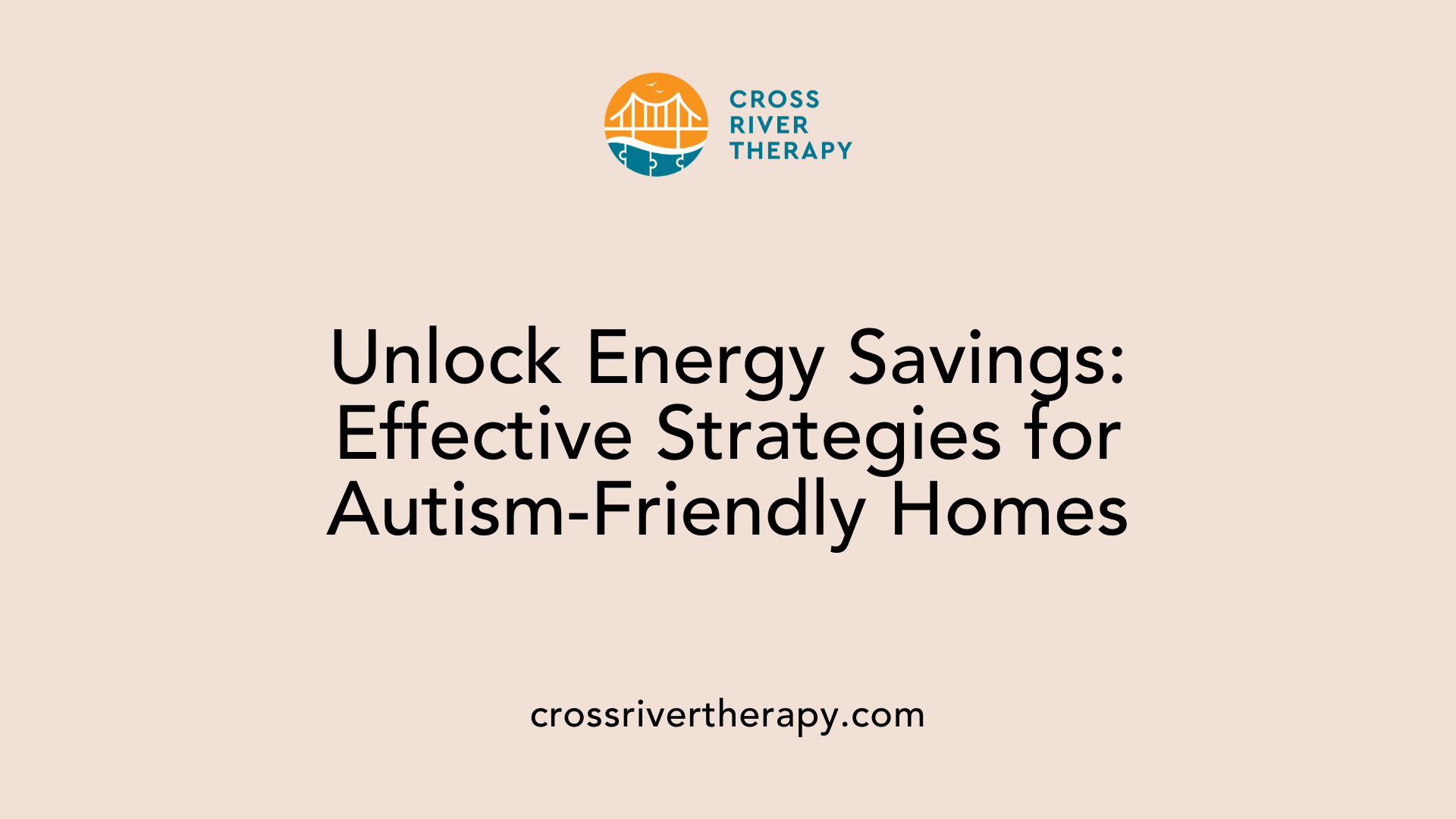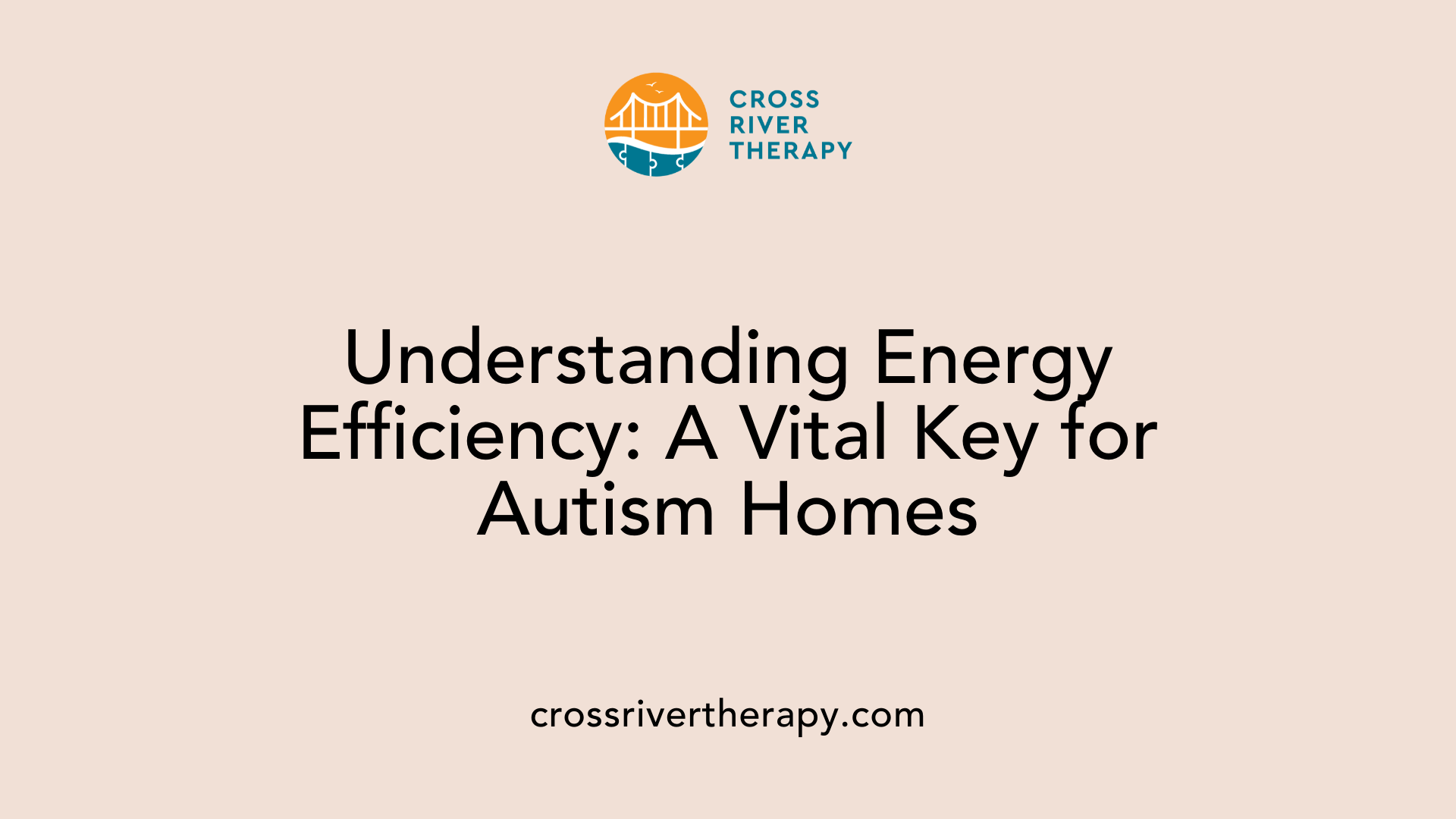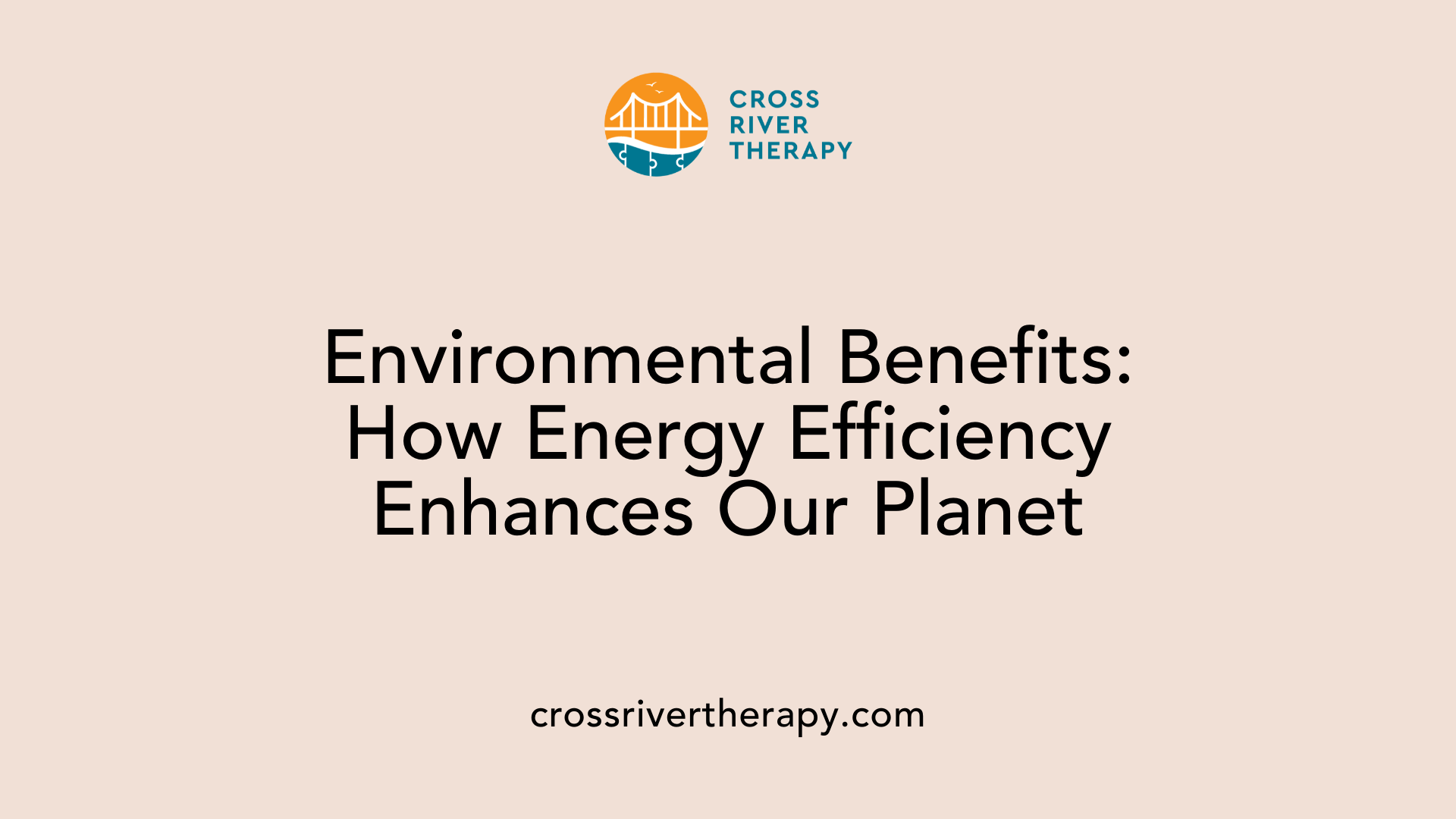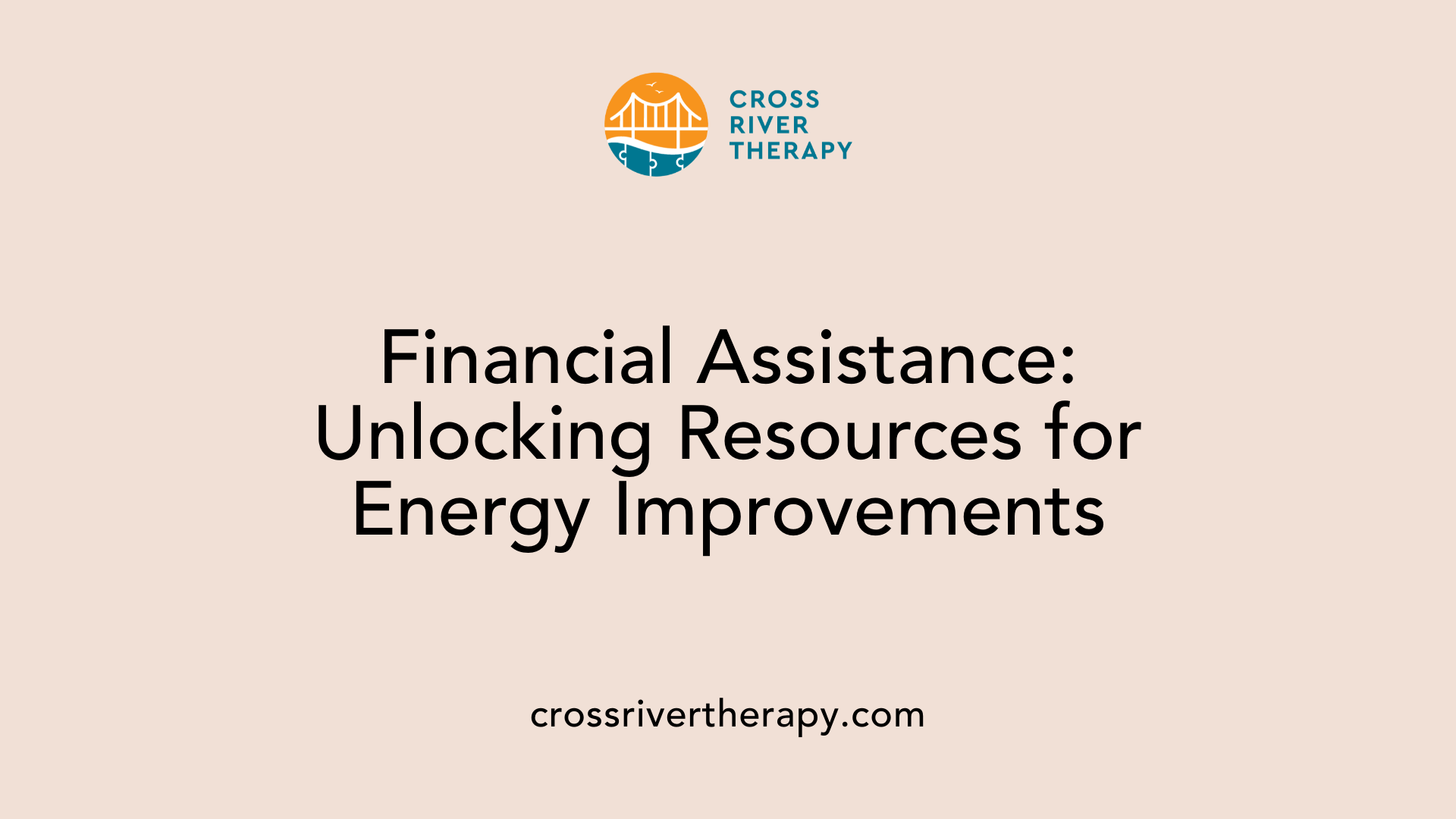Understanding the Intersection of Autism and Energy Management
Creating a comfortable, energy-efficient home environment for individuals with autism presents unique challenges, but it's also a vital step towards ensuring well-being while managing expenses. Energy-efficient practices not only support financial stability but also cater to the sensory needs of autistic individuals, making homes more comfortable and adaptive.
Strategies for Energy Efficiency in Autism Homes

What are some effective strategies for making homes more energy-efficient?
To enhance energy efficiency in homes designed for individuals with autism, several practical strategies can be an effective starting point.
Replacing Caulk and Weather Stripping
- Regularly replace caulk and weather stripping every two years around doors and windows. This simple maintenance task prevents drafts, ensuring that conditioned air stays inside, thus reducing heating and cooling demands.
Programmable Thermostats
- Utilize programmable thermostats to optimize heating and cooling schedules. Set them to lower temperatures during unoccupied times, conserving energy while maintaining comfort during key hours. Smart thermostats can learn family patterns, further enhancing this efficiency.
LED Lighting
- Switching to LED lighting can drastically reduce energy costs. LEDs use about 75% less energy than traditional incandescent bulbs and provide adjustable brightness options, creating calming atmospheres crucial for individuals with sensory sensitivities.
Energy-Efficient Appliances
- Invest in energy-efficient appliances, particularly those with the Energy Star label. These devices typically consume 10-50% less energy compared to standard models, leading to significant cost savings on utility bills. For instance, families can save around $100 annually by replacing older appliances.
Additional Considerations
- Don’t forget routine maintenance of your HVAC systems. Keeping them clean and functioning well can greatly improve their efficiency. Also, be conscious of reducing phantom loads by unplugging devices not in use, and optimize energy consumption while cooking and doing laundry to further lower energy usage.
By incorporating these strategies, families can not only reduce their utility bills but also create a more stable and comfortable environment for individuals with autism.
Importance of Energy Efficiency in Autism Homes

What is energy efficiency and why is it important?
Energy efficiency involves using less energy to perform the same tasks, thereby conserving resources and eliminating waste. This concept is especially relevant for homes catering to individuals with autism, where minimizing energy use can lead to significant benefits.
Enhancing energy efficiency yields lower energy costs for households, which is crucial given that autism-related expenses can average around $60,000 annually. By implementing energy-saving strategies like proper insulation and energy-efficient appliances, families can redirect those savings towards essential therapies and services for their loved ones.
Additionally, energy efficiency contributes to reduced greenhouse gas emissions. Employing smart technologies—such as smart thermostats and LED lighting—can lead to cumulative savings of up to 30% on utility bills, translating to annual savings of between $600 and $1,200. These eco-friendly options also create healthier environments by improving air quality through better ventilation and low-emission appliances.
Overall, energy-efficient practices play a vital role in supporting families with autism. Not only do they promote financial sustainability, but they also foster comfortable living environments that accommodate sensory sensitivities and enhance overall well-being.
Positive Environmental Impacts of Reducing Energy Costs

How does reducing energy costs impact the environment positively?
Reducing energy costs through energy efficiency plays a crucial role in benefiting the environment. One of the significant impacts is the substantial reduction in air and water pollution. For instance, initiatives in Texas have led to a decrease in smog-forming nitrogen oxide pollution equivalent to the emissions of over 100,000 cars in just one year. Such enhancements in air quality not only save lives but also culminate in lower health-related costs, with projections suggesting benefits between $1 billion and $2.5 billion by 2030.
Moreover, raising energy efficiency standards impacts carbon dioxide emissions positively, with estimates indicating a reduction of over a billion tons across the U.S. This action is pivotal in supporting climate change mitigation. The link between energy conservation and a reduction in harmful emissions provides healthier communities, especially for vulnerable populations, which are often disproportionately affected by pollution-related health issues.
Adopting energy-efficient practices is not only an economic advantage but also serves as a commitment to building a cleaner and more sustainable environment, ensuring improved public health for everyone.
| Aspect |
Benefit Description |
Impact Examples |
| Pollution Reduction |
Decreases harmful emissions, improving air and water quality. |
Reductions equivalent to 100,000 cars. |
| Health Benefits |
Leads to cost savings for healthcare and improves life quality. |
Estimated $1-$2.5 billion in benefits. |
| Climate Change Mitigation |
Lowers carbon dioxide emissions, aiding in global climate initiatives. |
Over a billion tons cut in emissions. |
Energy Efficiency Tailored for Sensory Needs

What are some considerations for energy efficiency in homes when accommodating sensory needs?
When designing energy-efficient homes for individuals with autism, sensory needs must be prioritized while minimizing energy consumption. Here are several key considerations:
Lighting Choices: Utilize energy-efficient lighting such as LED bulbs. These bulbs provide excellent illumination without the flickering found in traditional lights, making them less distressing for those with sensory sensitivities. They also use up to 80% less energy than incandescent bulbs, contributing to overall cost savings.
Efficient Heating Systems: Ensure that heating systems are regularly serviced to maintain optimal performance. Smart thermostats can help manage heating effectively, allowing for precise temperature controls that prevent fluctuations which might trigger anxiety in sensitive individuals.
Temperature Management Practices: Adjusting the thermostat by just a few degrees can lead to substantial savings. Closing blinds at night helps trap heat, while setting the hot water heater to 120 degrees can prevent scalding and decrease energy costs.
Energy-efficient Appliances: Switching to energy-efficient appliances not only reduces costs but also enhances comfort. For example, using microwaves instead of conventional ovens and washing laundry in cold water saves energy while ensuring that individuals aren’t overwhelmed by heat or noise.
Power Management: Using power strips can help eliminate phantom loads and facilitate easy switching off of multiple devices at once.
These considerations create a more supportive living environment while fostering energy efficiency.
Reducing Sensory Overload
Incorporating strategies to reduce sensory overload is essential. This can be achieved by:
- Smart Home Technology: Automated systems that adjust lighting based on the time of day or occupancy can minimize distractions and promote a calming atmosphere.
- Sound Management: Using sound-absorbing materials and soft furnishings, along with appliances that operate quietly, reduces noise pollution, creating a tranquil setting.
LED Lighting and Smart Thermostats
Both LED lighting and smart thermostats are instrumental in crafting an energy-efficient and sensory-friendly home.
- LED Bulbs: They provide adjustable brightness and color options, further allowing customization to suit sensory preferences.
- Smart Thermostats: These devices learn occupancy patterns, helping to maintain stable temperatures and avoid sudden changes that might disturb individuals sensitive to climate variations.
By blending energy efficiency with considerations for sensory sensitivities, families can foster a comfortable, supportive, and cost-effective living space.
Smart Home Technologies and Autism
How can smart home technologies contribute to energy savings and comfort for families with autism?
Smart home technologies can significantly enhance both energy savings and comfort for families with autism. By optimizing energy usage, these systems can lead to substantial cost reductions. Notably, smart lighting and thermostats can reduce energy consumption by up to 70% and 15% per device, respectively. This efficiency allows families to redirect financial resources toward essential therapies and services for their autistic family members.
Moreover, these technologies facilitate the customization of lighting and climate. Individuals with autism often have heightened sensory sensitivities, and smart lighting systems can adjust brightness and color temperature to create calming environments. Similarly, smart thermostats learn occupancy patterns to maintain stable indoor temperatures. Stability in the environment is vital for minimizing anxiety and sensory overload.
In addition, energy monitoring systems empower families to track their consumption patterns. This insight can help in making informed decisions about energy usage, further enhancing comfort levels in the home. The overall implementation of smart technologies promotes independence and emotional well-being, crucial aspects for individuals on the autism spectrum.
The Role of Renewable Energy in Autism-Friendly Homes
What are the benefits of using renewable energy solutions in homes tailored for individuals with autism?
The integration of renewable energy technologies, especially solar panels, in autism-friendly homes presents numerous advantages. First and foremost, these solutions lead to improved indoor air quality. By reducing reliance on traditional energy sources that emit pollutants, families can create a healthier living space for individuals with autism, who may be more sensitive to environmental contaminants.
In terms of financial relief, solar energy can represent significant cost savings. Families adopting solar power may save between $600 and $1,200 annually on utility bills. This reduction in expenses allows families to allocate more resources toward essential services and therapies, ensuring that individuals receive the necessary support.
Additionally, the use of renewable energy fosters a calmer home environment. With integrated smart technologies, families can customize lighting and climate control to meet the specific sensory needs of their loved ones. Controllable lighting systems—such as those that adjust brightness or color temperature—help create a soothing atmosphere while stabilization in temperature reduces sensory overload.
Overall, renewable energy solutions contribute not just to environmental sustainability but also significantly enhance the quality of life for individuals with autism, promoting wellness through improved air quality, reduced noise levels, and tailored living conditions.
Navigating Financial Assistance Programs

Are there financial assistance programs for energy-saving improvements in homes supporting individuals with autism?
Yes, there are several financial assistance programs designed to help families improve energy efficiency in homes that support individuals with autism. These programs aim to manage the additional expenses associated with care while promoting sustainable living.
Grants and Rebates
Organizations like Autism Speaks offer valuable resources for finding state and federal disability benefits, including Medicaid Waivers tailored for families caring for individuals with autism. In addition, programs such as the Low-Income Home Energy Assistance Program (LIHEAP) provide financial support to cover energy costs and facilitate energy-efficient upgrades.
Local community organizations also play a role, offering grants, low-interest loans, and rebate programs specifically aimed at offsetting costs related to energy-efficient home improvements. These initiatives are crucial for families seeking to lower their utility bills while creating a comfortable environment for their loved ones.
Financial Management
Effective financial management is essential for families navigating the high costs associated with autism care, which average around $60,000 annually. Access to financial assistance programs can significantly ease this burden, allowing families to allocate their resources more effectively towards therapies and other necessary services.
By utilizing available funding and being proactive about energy-efficient upgrades, families can create energy-efficient homes that not only reduce costs but also enhance comfort for their residents.
Families looking for additional assistance can search for information on financial aid specifically directed towards energy-saving upgrades in autism homes to maximize their resources and support their loved ones.
Customizing Homes for Sensory Needs
Sound Management
Creating a peaceful living environment is essential for individuals with autism, as they may experience heightened sensitivity to sounds. Sound management strategies can be implemented, such as soundproofing rooms, adding soft furnishings, and installing acoustic panels. These measures help absorb sound and minimize echoes, creating a quieter space that reduces sensory overload.
Temperature Control
Stable indoor temperatures are vital for comfort. Smart thermostats play a significant role in this aspect, learning occupancy patterns and automatically adjusting heating and cooling based on the household's schedule. This precision helps prevent unexpected temperature fluctuations that might trigger anxiety or discomfort in individuals with autism. In addition, proper insulation is crucial to maintain consistent indoor climates by minimizing heat loss in winter and heat gain in summer.
Indoor Air Quality
Improving indoor air quality is another crucial aspect of customizing homes. Effective ventilation systems and air filtration help reduce allergens and pollutants, contributing to a healthier living environment. This factor is particularly important since individuals with autism may be more susceptible to respiratory issues. Utilizing energy-efficient solutions not only enhances air quality but also supports emotional well-being by creating a calm and soothing atmosphere.
Cost and Environmental Benefits of LED Lighting
LED vs. Traditional Bulbs
LED bulbs stand out for their remarkable energy efficiency, consuming 75% less energy than traditional incandescent bulbs. This efficiency translates into lower electricity bills, making LED bulbs a financially savvy choice for families managing the elevated costs associated with autism care. Given that the average monthly energy costs for autism homes can range from $250 to $400, switching to LED lighting presents a strategic and impactful saving opportunity.
Calming Environment
Beyond the cost benefits, LED lighting enhances the living environment for individuals with autism. The reduced flickering and lower heat output of LED bulbs contribute to a more comfortable atmosphere. Adjustable brightness and color options offered by LEDs allow families to tailor their lighting conditions, creating soothing spaces vital for emotional well-being and minimizing sensory overload.
Long-term Savings
Investing in LED lighting not only reduces immediate energy consumption but also boasts longevity, often lasting 25,000 hours or more. This durability results in fewer replacements and contributes to overall lower maintenance costs. Families adopting LED technology can expect to see cumulative savings on utility bills while simultaneously benefiting the environment with reduced carbon footprints. Such strategic choices help divert resources towards essential therapies and support services, improving overall quality of life.
Integrating Renewable Energy for Cost Efficiency
Financial Savings
Adopting renewable energy sources like solar and wind can lead to substantial financial savings for families living in autism-friendly homes. Families investing in solar power can save between $600 and $1,200 annually on utility bills. This reduction allows families to reroute vital funds toward necessary therapies and healthcare services that enhance the quality of life for individuals with autism.
Energy Independence
Transitioning to renewable energy systems creates a sense of energy independence. With stable energy costs throughout the year, families can avoid the unpredictable spikes seen with conventional energy sources. This stability is crucial for maintaining a planned financial strategy, relieving some burden associated with the higher costs of autism care, which averages around $60,000 annually.
Solar and Wind Energy Systems
Solar energy systems significantly lower utility expenses while supporting a sustainable lifestyle. Wind energy systems provide a reliable energy supply, further enhancing the reliability of energy availability. The combined use of solar and wind energy also contributes to lower carbon footprints, fostering cleaner living environments that are especially beneficial for families with sensory-sensitive members. By integrating these renewable technologies, autism-friendly homes maximize cost efficiency and ensure a more stable and supportive living environment.
Conclusion: A Roadmap to Energy-Efficient Autism Homes
Why is Proper Insulation Important?
Proper insulation is vital for autism-friendly homes, ensuring minimal heat loss during winter and reducing heat gain in summer. This balanced indoor climate is crucial for individuals with sensory sensitivities, as it not only lowers utility bills but also enhances comfort.
How Can Smart Thermostats Help?
Smart thermostats offer advanced temperature control based on occupancy patterns, which can optimize energy usage significantly. Remote access to heating and cooling settings also encourages responsible consumption, allowing families to maintain stable indoor climates that minimize sensory overload.
What Role Do Energy-Efficient Appliances Play?
Switching to Energy Star-rated appliances can lead to significant savings, as these machines consume less electricity than standard models. Additionally, using LED lighting reduces energy consumption by up to 80%, resulting in calmer environments ideal for autistic individuals due to low heat production and reduced flicker.
How Can Renewable Energy Sources Make a Difference?
Utilizing renewable energy, such as solar power, can slash utility costs by up to 90%, freeing up financial resources for necessary therapies and services for individuals with autism. Beyond cost savings, these solutions contribute to a sustainable and soothing living environment.
Table of Energy-Saving Strategies
| Energy Strategy |
Benefit |
Estimated Savings per Year |
| Proper Insulation |
Reduces heat loss/gain |
20-50% on energy costs |
| Smart Thermostats |
Stable indoor climate |
10-12% on heating/cooling |
| Energy Star Appliances |
Lower energy consumption |
$100 - $150 |
| LED Lighting |
Creates calming environments |
Up to 75% |
| Solar Energy |
Significant utility bill savings |
$600 - $1,200 |
What are Behavioral Strategies for Energy Conservation?
Establishing energy usage routines, such as daily check-ins and tracking usage, helps families better manage their energy consumption. Simple habits like turning off lights when not in use, combined with the effective use of natural light, can lead to substantial savings and enhance comfort within the home.
Transitioning to Comfortable, Energy-Efficient Homes
By embracing energy-efficient practices, smart home technology, and renewable energy solutions, families can reduce costs and tailor living environments to better meet the sensory needs of individuals with autism. These strategies not only provide financial relief but also improve the quality of life, offering a sustainable path forward for autism-friendly homes.
References